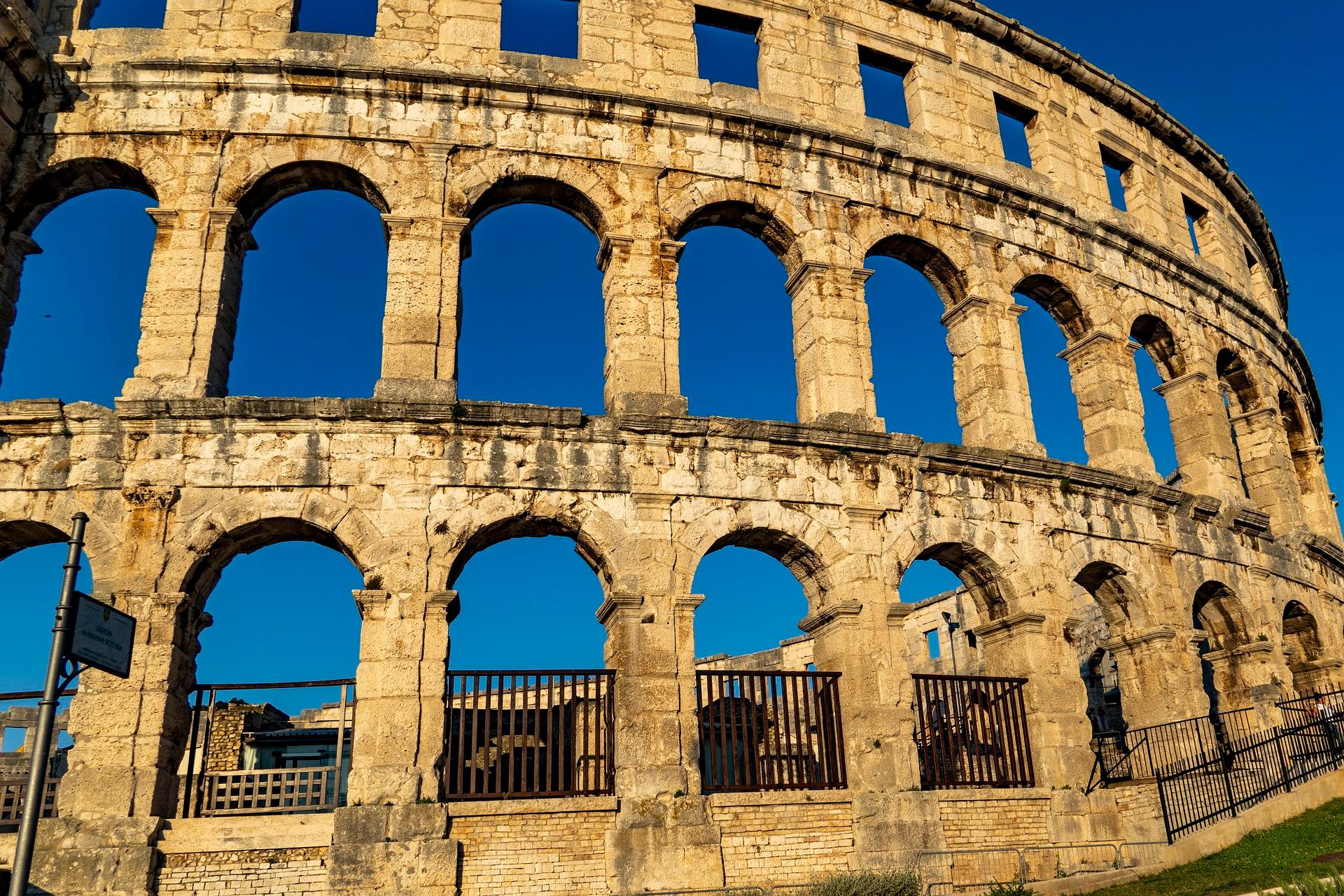Ancient Pula invites you to take an evening stroll around the well-preserved Roman amphitheatre or the Temple of St. Augusta, or sit in one of the cafés with typical Mediterranean atmosphere and cuisine. It's also a great base for exploring the green islet of Veruda, where you can delve into the secrets of scuba diving, or the scenic swimming spots and walks among the fragrant pine trees on the rocky Kamenjak peninsula.
The high season in Croatia runs from mid-June to the end of September. If you want to avoid the main influx of tourists, go in the spring, when the sea is quite cold, but you'll have the beaches to yourself. Be sure to book your accommodation in advance.
Pula – a Roman city with a Croatian flair
The bustling tourist and port town of Pula is located in the very south of the Istrian peninsula. On the site of today's Pula, the Romans established a fortified colony in the 1st century BC with a wealth of representative ancient architecture, and under their rule Pula flourished. It was the Austro-Hungarian Empire that brought about the rebirth of Pula, turning the capital of Istria County into an important military port.
Mediterranean cuisine in Pula
The Mediterranean atmosphere is created by the colourful facades of the houses and the local cafes and taverns, from which pleasant music and smells waft. Among the local specialities, try fresh seafood, the spicy ajvar salad of roasted peppers with aubergine, garlic and chilli, or blitva – boiled potatoes with spinach. Don't be intimidated by the black risotto, which is usually made with clams, mussels or cuttlefish, giving it a unique aroma. The salad of boiled octopus with onions and vinegar is excellent. If you get up a little earlier in the morning, you will experience a completely different city than in the evening. The crowded streets slowly fill with locals sitting at tables outside their houses while children play with stray cats. It's Sunday and Croatian families are out for a stroll, while tourists are hardly to be seen.
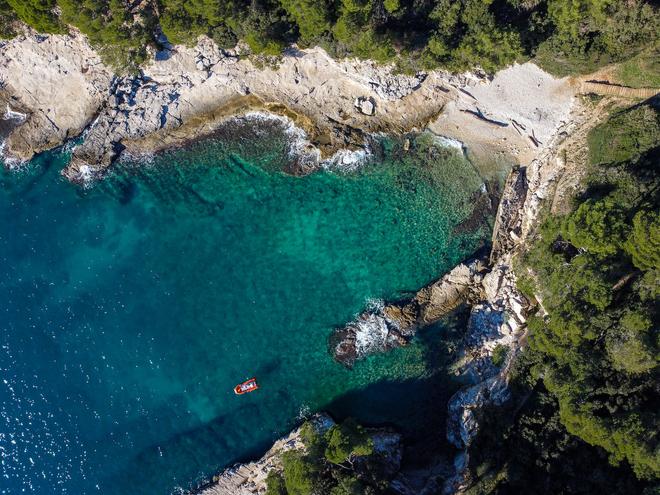
The centre of Pula
The town centre is made up of several almost parallel streets that encircle the hill with the fortress. The illuminated remains of the ancient buildings will appeal most during evening walks. On the northern edge of the centre, Pula is dominated by the Roman amphitheatre. The two-storey elliptical structure, which measures nearly 33 metres in height, is surrounded by arcades of 72 arches and has 64 windows on the upper floor. The amphitheatre was formerly used as a gladiator's battlefield and could hold up to 23,000 spectators. Even today, you can still see historical fencing demonstrations here, but it is much more used as a major concert and festival venue hosting world-famous musical artists.
Also visit the Hercules Gate, which was part of the Roman fortifications, and the ornate triumphal arch of the Sergius family, formerly part of the magnificent Golden Gate, which was demolished in the 19th century. The Temple of St Augustus, dedicated to the cult of Augustus and Roma, was built in the early 1st century and turned into a Christian church under Venetian rule. Next door was the temple of the goddess Diana, the remains of which can be easily discerned in today's town hall. Only the burial chapel remains of the 6th-century Byzantine basilica of St. Maria Formosa, which contains a Roman sarcophagus with the remains of 3rd-century saints and fragments of floor mosaics. Taste Croatia's famous ice cream on the cobbled streets, which come alive with street performers towards the evening.
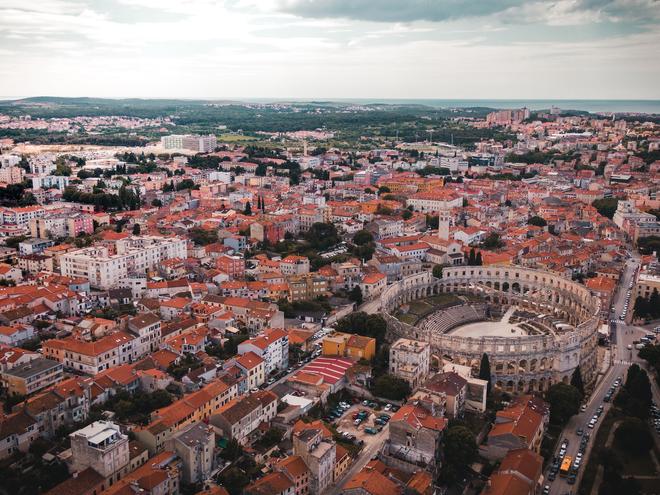
Pula Harbour and Aquarium
Pula is also a port, and a rather industrial one at that. However, the people of Pula have managed to turn the harbour construction site into a tourist attraction – the huge cranes are illuminated with coloured lights at night. In Pula you can also visit the marine aquarium, which is located in the former Austro-Hungarian coastal fortress of Verudela. Here you can learn about life under the surface of the Adriatic, tropical seas and European rivers and lakes. The Sea Turtle Rescue Centre cares for injured turtles, which are released back into the sea after they have recovered. From the roof of the aquarium, you can enjoy a beautiful view of Pula. The Verudela Underwater Park also offers a unique experience. Thanks to special helmets, it is possible to move freely on the seabed.
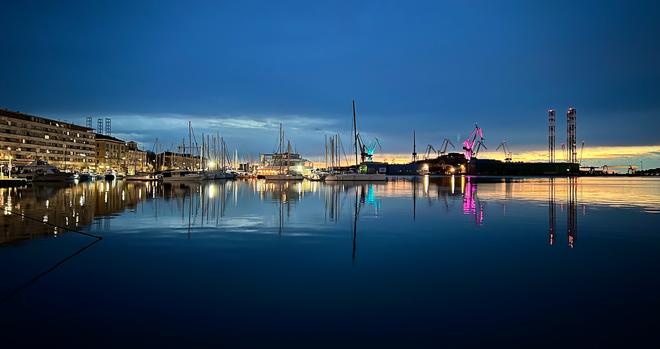
What else to see in Istria
Brijuni Islands – in today's island national park near the town of Fažana used to be the residence of President Tito with important architectural monuments – the remains of a Roman villa, a Byzantine fortress from the 4th and 5th centuries, a prismatic tower from the 12th to 13th centuries, a "Venetian castle" from the 16th to 18th centuries and the Gothic church of St. Germanus from the late 15th century. In the west of the island you will find a safari park with zebras, llamas, giraffes and deer. The Brijuni Islands are covered with vast forests of holm oak, laurel, maritime pine and other exotic species. Their ruggedness makes them inviting for boat trips and finding nice bays for swimming and diving.
Rovinj – one of the most picturesque and romantic Istrian port towns with a typical Mediterranean ancient character and natural surroundings with rich vegetation. The historic core and its ancient houses hide a rich offer of handicrafts and art objects. In particular, the narrow alley of Grisia is a unique open-air art gallery.
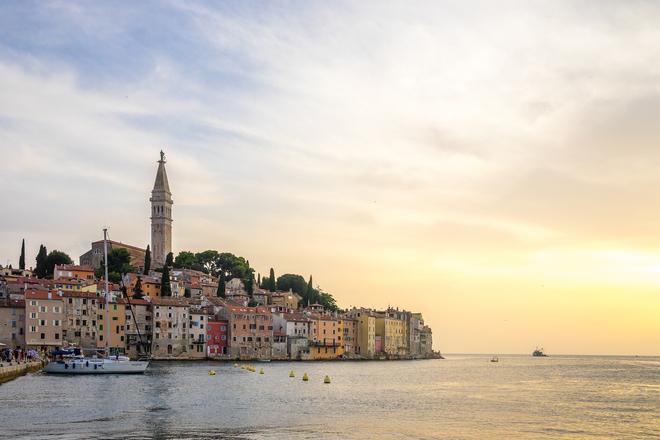
Poreč – originally a Roman town with the Christian Basilica of St. Maurus, whose 4th century mosaic floor is still preserved in the garden of the Euphrasius Basilica. The UNESCO-listed town has narrow streets and beautiful houses, whose roofs huddle side by side. It is set around a bay with a harbour and a town beach. It is one of the most visited places in Croatia.
Učka Nature Park – if you want to hike or trek into the mountains, choose one of the hiking trails that start in the coastal towns of Lovran and Opatija on the northeast coast.
Veruda's green islet welcomes divers
A short walk from the Verudela Fortress you will find the Bunarina harbour, where a ferry runs every hour to the Veruda islet, 15 minutes away. The island was settled in the 18th century by the Franciscans of Zadar, who founded the Convent of St. Mary, and since then it has been known as "Fratarski Island". The monks planted many different types of trees here during their time, including pine trees with large cones, and although much of Croatia has been deforested in recent years, the forest has been preserved and you will find the shade and scent of Mediterranean trees here.
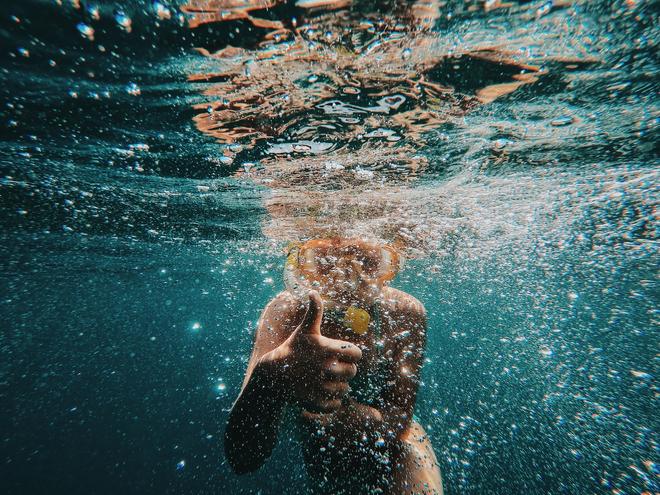
Accommodation on the island is only possible in your own tent. Those who are worried about discomfort can just come for the wonderful snorkelling, romantic sunsets with frolicking dolphins and a nice evening with a barbecue. Although Croatia is generally quite prone to fires, Veruda has fixed barbecues with seating. The barbecue is on pine cones, which are everywhere and give the barbecue the right Balkan touch. There is a chain of islands around the coast of Veruda, between which you can paddleboard or sea kayak, rent jet skis or motor boats.
The underwater surroundings of Veruda are a great attraction for divers – naval battles were fought here during both world wars and there are over 15 wrecks of various types of ships, from cargo to military to the German U78 submarine. One of the most attractive wrecks here is the Austrian excursion steamer Baron Gautsch from 1908. The ship sank in 1914 after striking its own mine while transporting the families of Austrian officers. The wreck and memorial to the many civilian victims lies almost 40 metres deep with its decks up, making the interior of the ship accessible. The wreck is heavily stocked, so you will be viewing it in the company of large eels and sea turtles.
Kamenjak peninsula for nature lovers
Croatia's typical bays can be found on the nine-kilometre-long Kamenjak peninsula about 12 kilometres south of Pula. It has an extremely rugged coastline that offers many beautiful swimming spots. White rocky coves washed by emerald blue sea hide different types of beaches – from pebble beaches to large stone slabs. Among the most beautiful beaches are Radovica and Pinižule on the west coast, as well as Plovanje, Njive and Školjić bays. Beautiful rocky beaches where the more adventurous can enjoy high jumps into the water are Toreto and Špilja. Portić bay on the east coast is a popular destination for sailors.
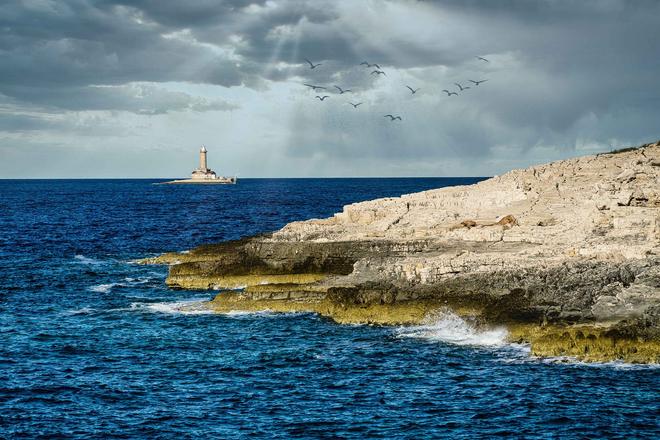
Approximately 30 species of orchids bloom freely on the Kamenjak peninsula from spring to autumn. In the bays south of Premantura you will only find small harbours (Polje, Podlokva) and a few old fishermen's houses. New construction is not allowed here, nor is the building of asphalt roads. The whole peninsula can be cycled along marked trails and dirt roads.
The waves of the sea have created underwater caves in the coastal cliffs, the most famous of which is the ten-metre high Kolumbarica. Take a boat trip and visit several of the surrounding islands. To the southwest lies the islet of Fenoliga, famous for the discovery of a dinosaur footprint, and today artificial replicas of dinosaurs peek out of the bushes at tourists. A little further to the southwest, the eponymous stone lighthouse from 1833 rises 34 metres high on the Porer cliff. The islets of the Medulin archipelago are covered in grass or low vegetation and provide ideal conditions for bathers. The most famous are Fenera, Ceja, Bodulaš and Trumbuja.
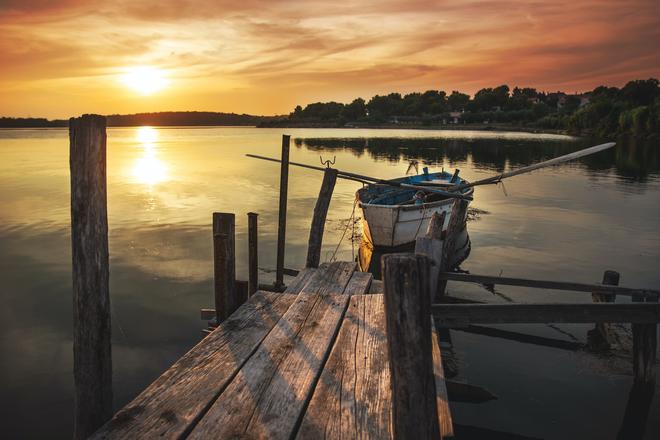
Kamenjak and the resort of Premantura are also among the top areas for windsurfing and are a paradise for fishermen – for example, the shoal called Albanež (also called Perikulož) is a renowned spot for rich catches. If you can't catch your own fish, at least try the delicious local fish specialities at the popular Safari Bar restaurant near the Kolumbarica cave.
